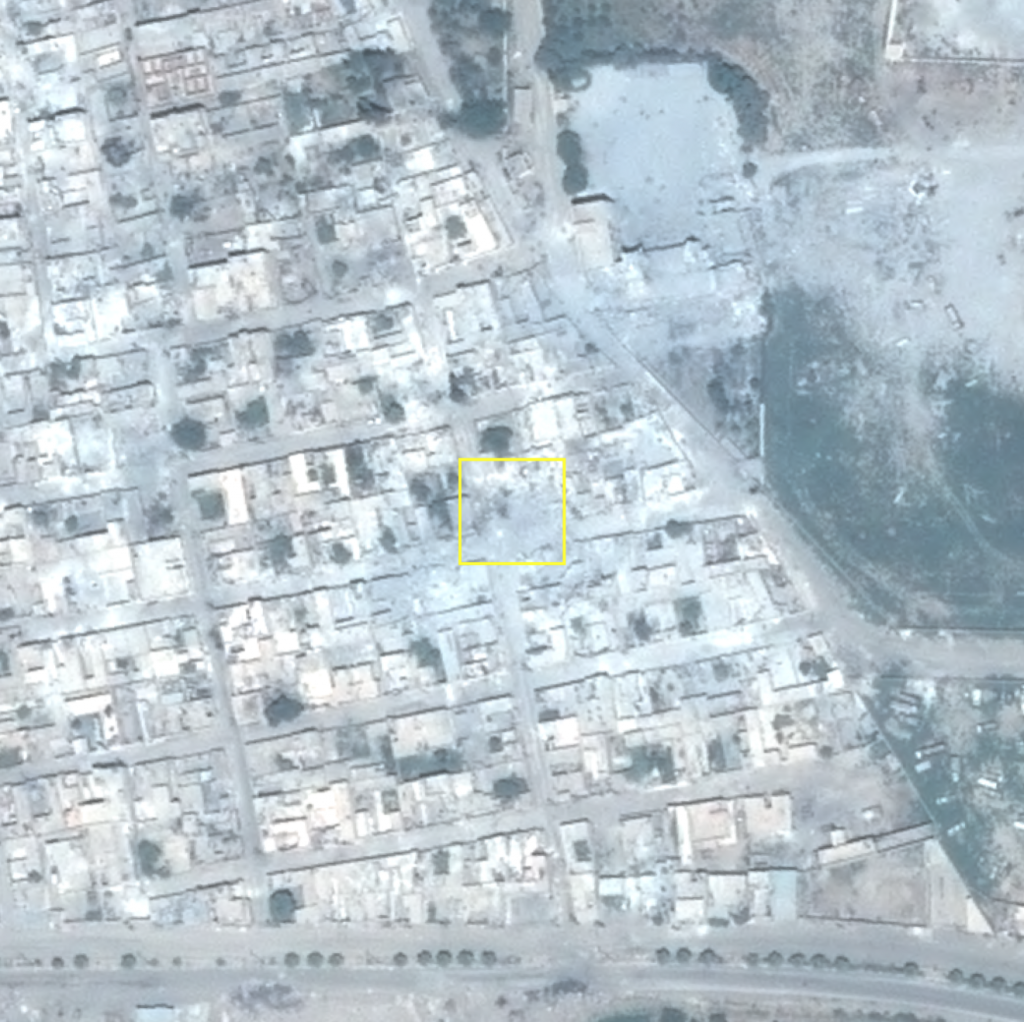Incident Code
Incident Date
Location
Geolocation
Geolocation
Airwars Assessment
(Previous Incident Code: S1073)
At least 9 and up to 15 members of the Salamah family died in an alleged Coalition airstrike on Raqqa’s Hisham Bin Abd al Malek neghbourhood. Local media reported this incident in July of 2017: According to Ahmad al Shibli, Marwan Al Salama and his entire family of nine people were killed when a Coalition missile struck their home. Alraqqa Alhadath reported that Mr Al Salama was an engineer.Step News Agency put the death toll higher at 12 “from the same family”, while Raqqa rwb reported that ” 15 senior and young people” from the family, which had been displaced from Deir Ezzor, were still unaccounted for.
In February 2019, the Coalition assessed this event to be non-credible. Their report noted: “After review of all available strike records it was determined that more likely than not civilian casualties did not occur as a result of a Coalition strike.”
During investigations of this event for the April 2019 joint Airwars and Amnesty report War in Raqqa: Rethoric versus Reality (www.raqqa.amnesty.org), Amnesty field researchers found that 9 members of the Salamah family were killed in this strike and were able to identify the precise location. The report notes: “Immediately after a double air strike killed 10 Shabshoul family members and neighbour on 13 July 2017, a third air strike destroyed a house across the road, where the Salamah family was sheltering, killing Baydoor al-Jarad-Salamah and her daughter, Iman al-Dueihi-Salamah and her three children, and the chidren’s grandfather.” One of the survivors, Majid, spoke to Amnesty researchers: “My wife and I had waited for 13 years for a child and finally we had been blessed with a lovely daughter, Aya, who was 15 months old. Both Aya and my wife were killed killed in the strike.” The investigation also found that the strike took place between 8.30 and 8.45 pm on July 13, 2017, whereas Airwars had initially reported that it took place on July 17, 2017.
Victims
Family members (12)
Key Information
Geolocation Notes

House in which 9 members of the Salamah family died before the strike (July 7, 2017)
Imagery: Amnesty International

House in which 9 members of the Salamah family died after the strike (July 19, 2017)
Imagery: Amnesty International
